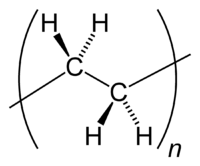Fatgodzilla
Beer Soaked Philosopher
- Joined
- 22/5/07
- Messages
- 4,459
- Reaction score
- 117
I go to the US site HomeBrewTalk for a different look at how the other mob does things. The recent BYO feature on Australian brewing opened a thread about No Chill which I got into. Two major concerns the Yanks have which I have never thought of is botulism and now why a cube doesn't allow too much oxygen in. Below is a post that someone here will have an idea of what this guy is asking me. All sane and not Off Topic comments would be considered.
Sorry to drag you all back to the botulism argument, but you are all missing one really important fact: the cubes used to store the wort are made of polyethylene, and polyethylene allows a lot of oxygen through it. So, once the wort is cooled, oxygen will to permeate the wall of the cube, dissolve in the wort, and the wort will become oxygen-saturated in a matter of days.
I did some math based on the oxygen transmission rates posted here - http://www.flextank.com.au/PDF_Files/2-Year-Update.pdf and came up with a transmission rate of about 2 ppm per day based on a full 20 liter cube, 27 cm on a side. So, in 4 days, enough oxygen could get in to saturate the wort. Voila, no spore growth since an anerobic environment is needed. I suspect the rate limiting factor is the diffusion of oxygen through the wort, not the permeation through the cube wall.
By the way, my calculations were based on a 1 mm (40 mil) wall thickness, and I suspect the cubes are less than half that, which increases the amount of oxygen that can permeate in 24 hours.
I surmise that no Aussie homebrewers have botulinized themselves for several reasons, none of which have to do with their robust immune systems... Presence of oxygen, sterilization of the wort by boiling, followed by natural pasteurization as the wort slow cools, and competition by yeast when a true anaerobic environment is created during the first phase of yeast growth.
I'm not sure why the cube use directions suggest minimizing air space, unless it is the originators of the idea didn't know about polyethylene's ability to transmit oxygen. Anyone know why? Fatgodzilla?







